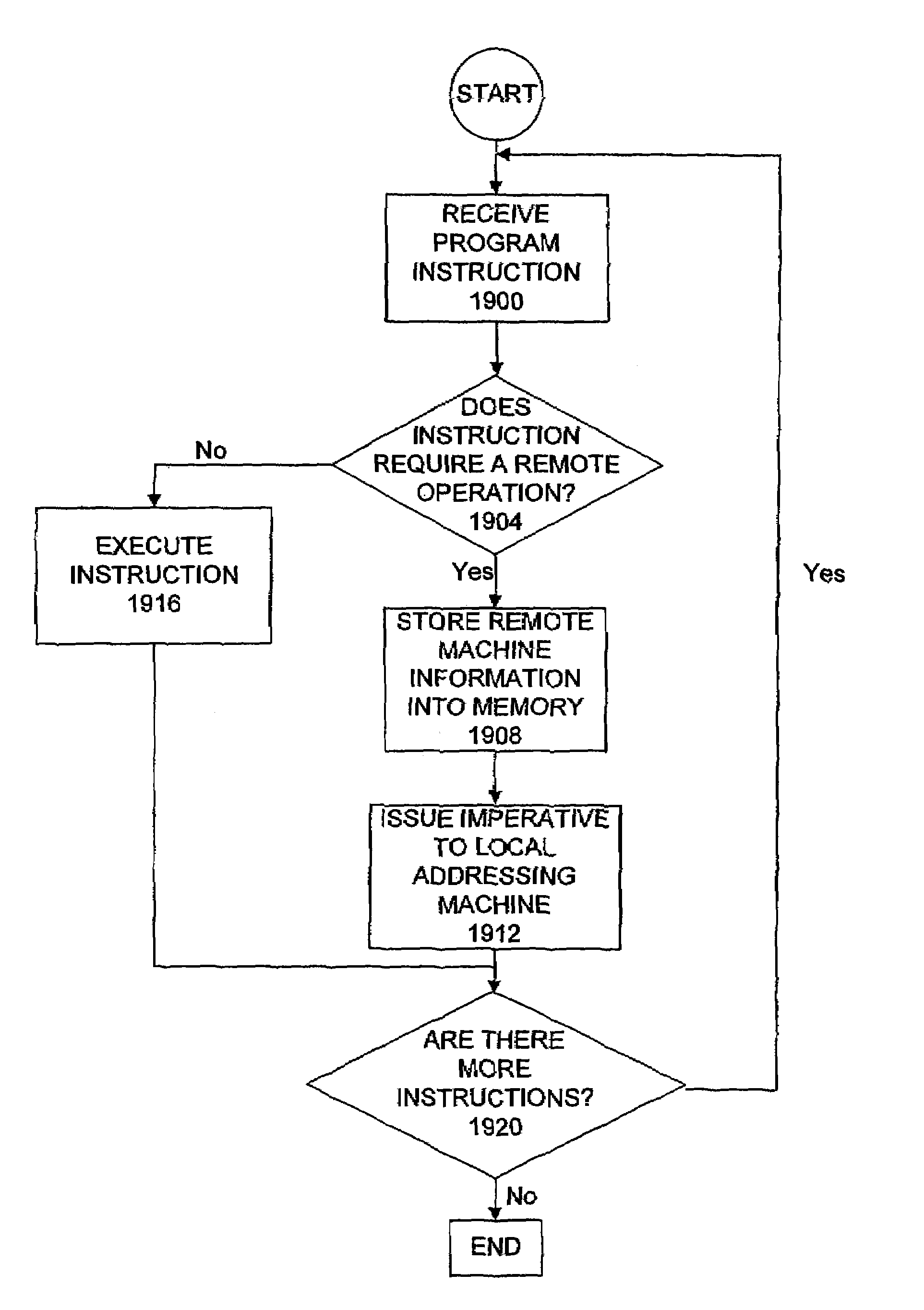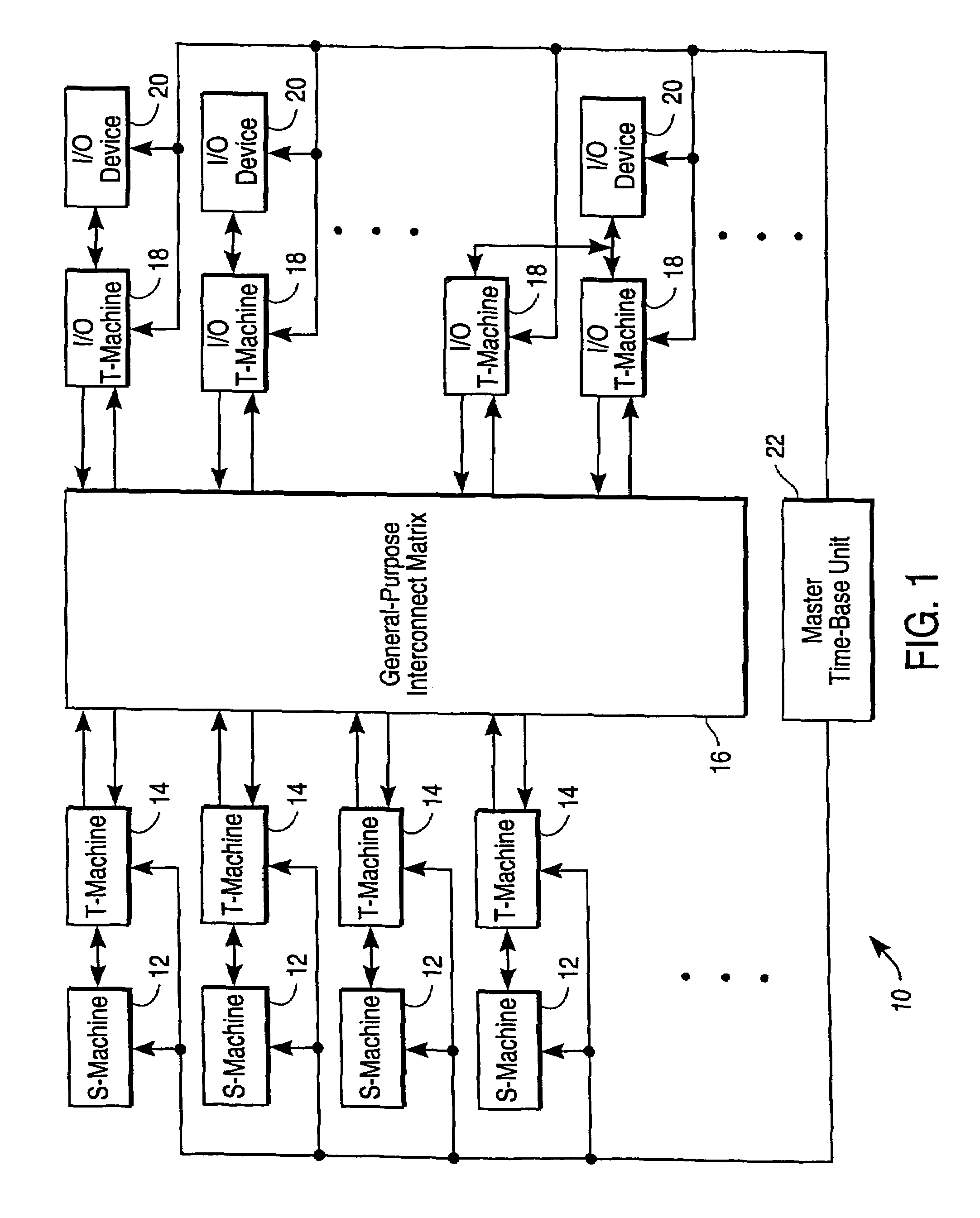In general, the incorporation of computational resources dedicated to a limited number of problem types into a computer
system adversely affects
system cost because specialized hardware is typically more expensive than general-purpose hardware.
The design and production of an entire special-purpose computer can be prohibitively expensive in terms of both
engineering time and hardware costs.
The use of dedicated hardware to increase computational performance may offer few performance benefits as computational needs change.
In the prior art, as computational needs have changed, new types of specialized hardware or new special-purpose systems have been designed and manufactured, resulting in an ongoing cycle of undesirably large nonrecurrent
engineering costs.
The use of computational resources dedicated to particular problem types therefore results in an inefficient use of available system
Silicon when considering changing computational needs.
Thus, for the reasons described above, attempting to increase computational performance using dedicated hardware is undesirable.
Because the fundamental computational hardware in such prior art systems is not itself reconfigurable, such systems do not provide optimized computational performance when considering a wide range of problem types.
In most computation-intensive problems, significant amounts of time are spent executing relatively small portions of
program code.
Unfortunately, a
computational model based upon one or more reconfigurable computational accelerators suffers from significant drawbacks, as will be described in detail below.
A first drawback of ARP architectures arises because ARP systems attempt to provide an Optimized implementation of a particular
algorithm in reconfigurable hardware at a particular time.
This adversely affects program complexity.
Unfortunately, the automatic determination of a set of reconfigurable hardware resources and an
interconnection scheme to provide optimal computational performance for any particular
algorithm under consideration is an NP-hard problem.
The development of such a compiling system, however, is an exceedingly difficult task, particularly when considering multiple types of algorithms.
Therefore, the size of the
algorithm for which the ARP apparatus can be configured is limited by the number of reconfigurable logic devices present.
The maximum data-set size that the ARP apparatus can
handle is similarly limited.
An examination of
source code does not necessarily provide a clear indication of the limitations of the ARP apparatus because some algorithms may have data dependencies.
This limits the
maximum rate at which reconfiguration can occur for alternative problems or cascaded subproblems.
A third drawback of ARP architectures arises from the fact that one or more portions of
program code are executed on the host.
Because some
program code is executed upon the nonreconfigurable host, the set of available
Silicon resources is not maximally utilized over the time-frame of the program's execution.
In particular, during host-based instruction execution,
Silicon resources upon the ARP apparatus will be idle or inefficiently utilized.
Similarly, when the ARP apparatus operates upon data, Silicon resources upon the host will in general, be inefficiently utilized.
Thus, ARP systems do not provide a means for treating a particular set of reconfigurable hardware resources as a readily reusable resource from one algorithm to another because
reusability requires a certain level of algorithmic independence.
An ARP apparatus cannot treat its currently-executing host program as data, and in general cannot contextualize itself An ARP apparatus could not readily be made to simulate itself through the execution of its own host programs.
Furthermore, an ARP apparatus could not be made to compile its own HDL or application programs upon itself, directly using the reconfigurable hardware resources from which it is constructed.
An ARP apparatus is thus architecturally limited in relation to self-contained computing models that teach independence from a
host processor.
Because an ARP apparatus functions as a computational accelerator, it in general is not capable of independent Input / Output (I / O)
processing.
The performance of an ARP apparatus may therefore be I / O limited.
However, because the entire ARP apparatus is configured for a single, specific problem, an ARP apparatus cannot balance I / O
processing with
data processing without compromising one or the other.
Moreover, an ARP apparatus provides no means for interrupt
processing.
ARP teachings offer no such mechanism because they are directed toward maximizing computational acceleration, and interruption negatively impacts computational acceleration.
A fourth drawback of ARP architectures exists because there are
software applications that possess inherent
data parallelism that is difficult to
exploit using an ARP apparatus.
ARP architectures are therefore less effective architecturally than one or more innovative prior art nonreconfigurable systems.
For example, an ARP apparatus lacks an effective means for providing independent timing to multiple reconfigurable logic devices.
Similarly, cascaded ARP apparatus lack an effective
clock distribution means for providing independently-timed units.
As another example, it is difficult to accurately correlate
execution time with the
source code statements for which acceleration is attempted.
An equally significant problem with conventional architectures is their use of virtual or
shared memory.
This teaching of using a unified
address space results in slower, less efficient memory access due to the more complicated addressing operations required For example, in order to access individual bits in the memory device of a system using
virtual memory, the
physical address space of the memory must be first segmented into logical addresses, and then virtual addresses must be mapped onto the logical addresses.
Additionally, in
shared memory systems the processor typically performs address validation operations prior to allowing access to the memory, further complicating the
memory operation.
However, the MMU /
software interaction adds yet another degree of complexity to the memory accessing operation.
Additionally, MMUs are quite limited in the types of operations which they can perform.
They cannot
handle interrupts,
queue messages, or perform sophisticated addressing operations which all must be performed by the processor.
The addition of more processors increases the difficulty of the virtual address to
logical address conversion.
These complications in the memory accessing operation necessarily degrade system performance; this degradation only increases as the system grows larger as more processors are added.
The ccNUMA machines use complex and costly hardware, such as cache controllers and crossbar switches, to maintain for each independent CPU the illusion of a single
address space even though the memory is actually shared by multiple processors.
Further, the ccNUMA is not useful for systems in which processors are not similar in nature.
In a system in which processors are optimized to serve different functions, and therefore operate differently from each other, the ccNUMA architecture does not provide an
effective solution.
 Login to View More
Login to View More  Login to View More
Login to View More 


